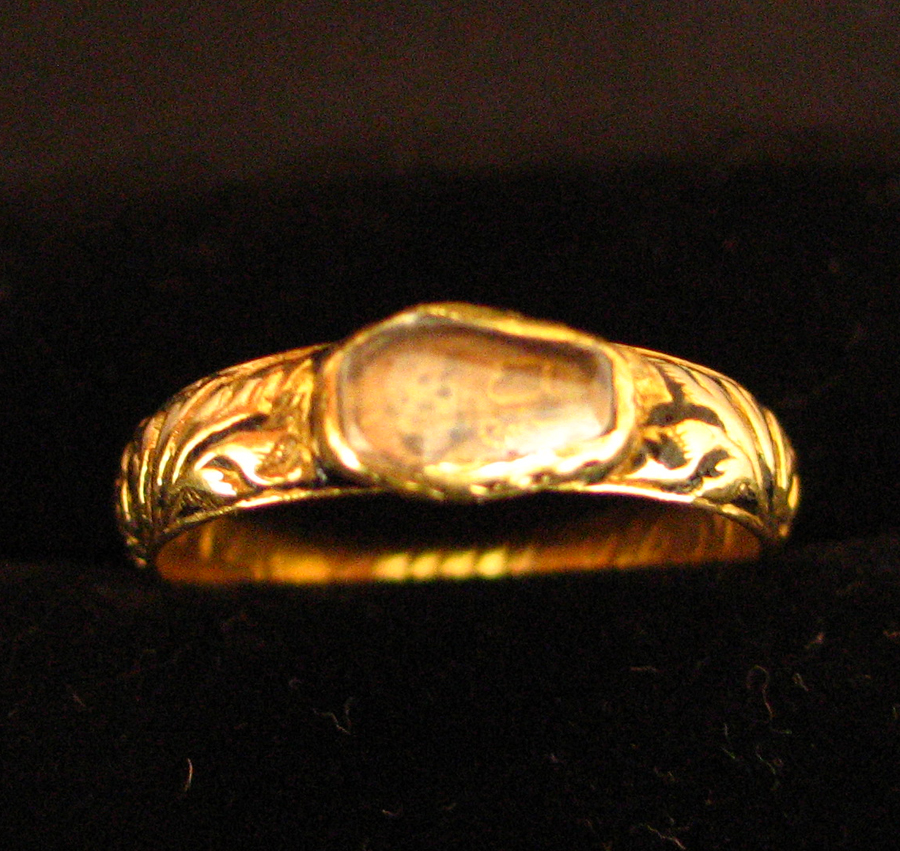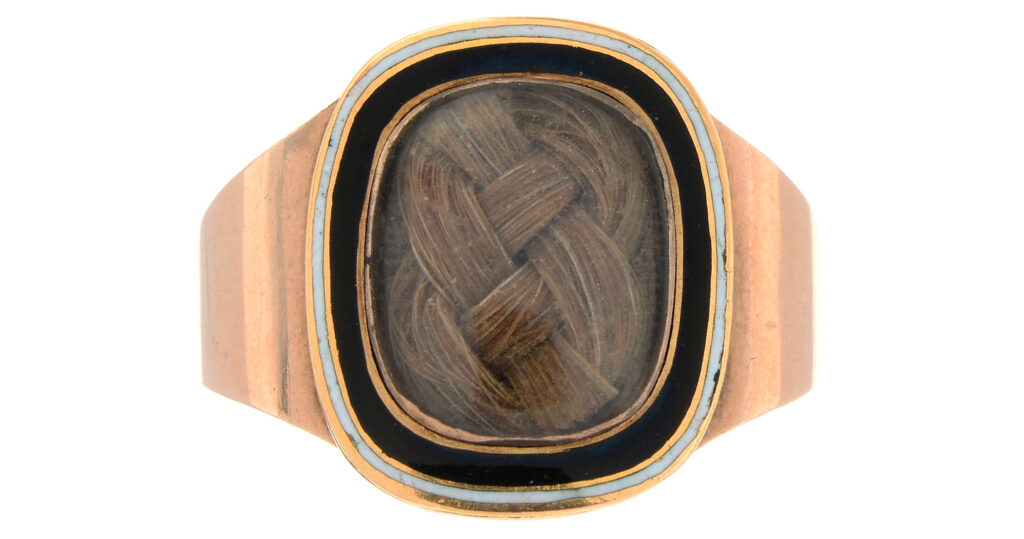Memento Mori Coffin Ring, c.1715
In the first quarter of the century, crystals could take the form of coffins on top of rings, aptly referred to as ‘coffin’ rings, though the majority would be smaller oval or rectangular shapes with some having a tiny skull underneath, placed upon hair.
This ‘coffin’ piece has many of the turn of the century Baroque flourishes that are embellished with the enamel work around the band. Continuity between this and earlier bands can be seen in the inscription work inside the ring, which was made popular by posy rings of the previous century. This was a simple way of personalising a piece and inwardly reflecting its sentiment. The coffin crystal on top has gold cipher underneath the skull, bearing the ‘EO’ initials on hair. Post 1715, change in the style of these pieces would be ushered in with Rococo styling, making bands heavily embellished and crystals becoming smaller and more angular.
Symbolically, Memento Mori was an evolving concept during the late 17th and early 18th centuries. This ring comes at a time when the symbols associated with Memento Mori were largely standardised and adapted into mainstream fashion for the purpose of mourning. Symbols such as the skeleton, cherubs, angels, hourglass and scythe all were appropriated into jewels, often with the dedication on the reverse of the piece, be it a slide, ring or pendant. Even more importantly, it became a custom. Rather than simply an additional element of mourning, the jewels had become a necessary element to mourning, a depiction of your status in society and in mood.
For the evolution of the skeleton and Memento Mori in jewellery symbolism, please click to read the article Skeletal Rings, Memento Mori and the Evolution of the Symbol.








